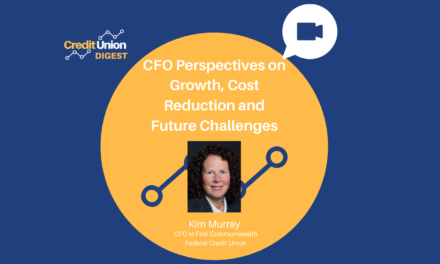It takes courage to admit that there is just too much information to review, evaluate and then make the best business decisions. We may view this as an admission that we do not have the capacity or capability to process all the information and are therefore reluctant to change. However, whether a credit union has 10,000 or 100,000 member accounts, it cannot marshal the resources to review each situation individually. By being willing to embrace “tried and true” analytical tools, credit unions can become significantly more efficient, effective, and successfully grow member services.
Utilizing the analytics often begins with product level profit analysis. Traditionally, credit unions measured profits by branch. This does not adapt to changes in customer location, financial choices and lifecycle impacts to members financial needs. Understanding the profit contribution of each product provides insights to increase a product’s contribution, and which products need restructuring to improve margins. For example, the mortgage portfolio may be the largest product in terms of asset value and profit dollars, but how does the gross margin for mortgages compare to the gross margin of other products. By understanding product profitability, a credit union is positioned to begin understanding profit by member segments, including the mix of products used by different segments.
Analytics empowers credit unions to better understand their members’ needs, which then contributes to member retention and growth. Through analytics, credit unions can understand which members use which products, the combination of products used, the products not used, as well as the products that members use from other financial institutions. For members with direct deposit, what other products do they use? For example, credit union members with only one product, such as an auto loan, are ripe opportunities for other products. What is the ideal combination of products for the credit union? What product offerings could stimulate inactive, dormant members to become activated? Analysis of members demographics, product choices, and use of competitor products provides a solid foundation for marketing, targeted offers, and cross selling.
Using analytics opens the door to portfolio segmentation, scoring, predicting outcomes, forecasting volumes and financial impacts. Not only does this enable the credit union to make better loan decisions, it also and just as importantly, provides the tools to better manage the portfolio by facilitating decisions, such as credit approval, limit changes or credit line renewals are best for each member. For example, analytical tools can enable a credit union to proactively offer an increased credit card line that has the benefits of increasing earnings, meeting a member’s needs before they make a request, and reducing operational costs.
Analysis of the marketing, sales, and cross selling activities provides a credit union with quantitative feedback of what worked, as well as what did not work. The use of analysis enables the credit union to build empirical data from which to learn and then make its next marketing decision. When the marketing department is trying to understand the outcomes of its most recent product offering, analysis can provide valuable insights. Regardless of the scale, marketing analysis enables the credit union to compare the performance of two alternative products, as well as the members’ adoption rate based on different offers for the same product.
Analysis provides insights to understand the likelihood a past due account is likely to become a write off, or to predict the propensity of an account to pay a past due balance with or without an intervening action. For example, if the credit union begins to experience a significant increase in past due accounts, how does it determine the best course of action? Leaning on analysis, a credit union can forecast and plan portfolio maintenance requirements, shifting from operating as a reactive collections department to a proactive profit center. This approach positions the credit union to evaluate and plan, rather reflexively responding to unseen crisis.
Analytics provides the data-driven information to enable better decisions for all aspects of the credit union. However, the credit union needs to combine the analytics with an analytical culture. Together this strategy will move the organization from saying, I think this is the best decision, to I know this is the best decision. When analysis is combined with an analytical culture, it produces a powerful catalyst for better decisions to improve productivity, member relationship management, and profitability.
The first step to leveraging the insights of analytics is to acknowledge the opportunities for your credit union, if analytics were better employed. This is where the journey begins. The second step is to objectively assess your credit union’s capabilities and resources to implement an analytically based decision-making process. Some credit unions begin their journey on a smaller scale with one product, while others move on a grander scale. Either way, making the decision to move from I think, to I know is a very powerful step to moving your credit union to achieve its strategic goals.
About the author: Larry Grant, Principal, Aurum Consultants. lsgrant@aurumconsultants.com www.aurumconsultants.com




